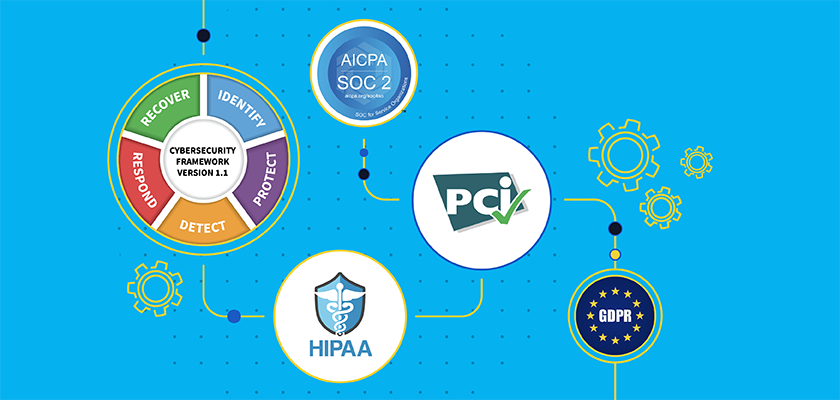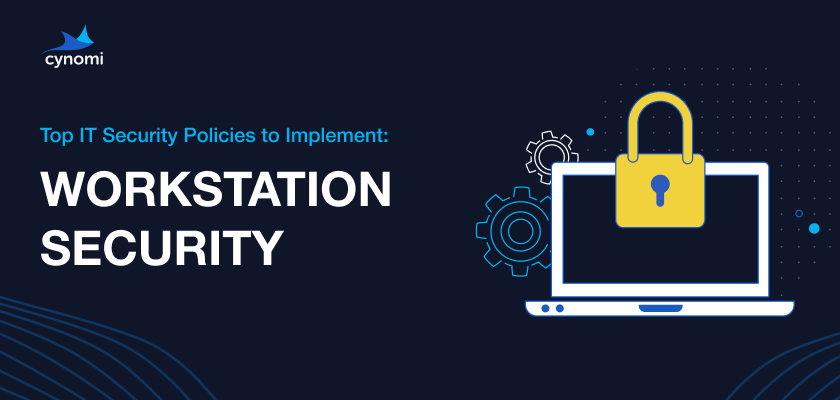Top IT Security Policies to Implement: Cybersecurity Awareness

Building a cybersecurity awareness program and outlining related policies is an essential function of the CISO or vCISO role. This endeavor is generally time-consuming, particularly as each organization requires its unique policies, tailored to its structure, cybersecurity needs, regulatory obligations, and risk tolerance.
Humans are often the weakest link when it comes to cybersecurity. In fact, as of the 2023 Verizon Data Breach Investigations Report, 74% of breaches involved the human element, which includes social engineering attacks, errors or misuse. This emphasizes the importance of employee awareness training in the overall cybersecurity strategy of any organization.
In this post, we will discuss the importance of having a comprehensive cybersecurity awareness policy, outline the main controls to be included in this policy and share some real-life tips from experienced vCISOs.
Why Is This Policy Important?
The importance of a cybersecurity awareness policy cannot be overstated. It is crucial for minimizing human error, one of the leading causes of data breaches, by educating employees on the risks and how to avoid common missteps, such as falling for phishing scams or downloading malicious software. The dynamic nature of cyber threats makes regularly updated cybersecurity awareness training essential in helping employees stay abreast of new attack types and cybercriminal tactics.
Moreover, a well-implemented policy ensures compliance with industry-specific legal and regulatory requirements for cybersecurity awareness training, thereby avoiding potentially significant fines and penalties.
Lastly, a cybersecurity awareness policy promotes a culture of security within an organization, fostering an environment where everyone understands their role in protecting the company’s data and systems. Thus, a cybersecurity awareness policy is a critical element in the overall security posture of an organization, significantly aiding in deterring and responding to the ever-growing and evolving landscape of cyber threats.
The Attacks This Policy Help Protect Against
A comprehensive cybersecurity awareness policy helps safeguard an organization against various attack types, including social engineering, phishing and spear phishing attacks where attackers masquerade as trusted entities to trick individuals into sharing sensitive information. It also helps protect from malware attacks, including ransomware, which involve harmful software potentially causing significant damage.
A strong awareness policy also defends against password cracking attempts, unintentional malicious software downloads, and intercepted communications by cybercriminals. By educating employees on how to identify and respond appropriately to these threats, a cybersecurity awareness policy significantly enhances an organization’s overall cybersecurity posture.
The Scope of This Policy
The cybersecurity awareness policy should be enforced for all those who have a user account in the company, including all employees, managers, senior executives, third parties, and contractors.
Top Controls in This Policy
The controls listed below are the foundational components of a cybersecurity awareness policy. By following them, you can improve your security:
- Regular Cybersecurity Awareness Training: This is essential to keep all employees up-to-date on the latest threats, safe online practices, and company policies. As part of the training, ensure all employees are aware and have signed the company cybersecurity policy.
Why?
Regular awareness training keeps employees updated on constantly evolving threats and reinforces essential security practices, thus reducing the risk of human error, a leading cause of cyber incidents. It empowers individuals to actively protect the organization’s digital assets and fosters a culture of security within an organization. - Attack Simulation Exercises: These allow employees to recognize phishing attempts and understand the correct actions to take.
Why?
Attack simulation exercises, such as phishing simulations, provide a practical, hands-on experience for employees to apply their knowledge in a safe environment, enhancing their ability to detect and respond to real cyber threats. These exercises also enable organizations to assess the effectiveness of their training programs and identify areas where additional training may be needed. - Incident Reporting Training: Educate all employees on the process of reporting potential security incidents or risks and educate all employees on this process.
Why?
Incident reporting encourages employees to actively participate in the organization’s cybersecurity efforts, aiding in the early detection and mitigation of potential threats. Moreover, analyzing these reports provides valuable insights for refining the training program and improving overall security posture. - Password Usage Education: Teach the importance of strong, unique passwords and the use of password management tools.
Why?
Creating strong, unique passwords is a fundamental defense against unauthorized access and data breaches. Ensuring employees are aware of that enhances the organizations’ security. Additionally, it promotes the use of password management tools and multi-factor authentication, further enhancing the security of user accounts and protecting the organization’s digital assets. - Awareness of the importance of updating and patching: Training employees on the importance of regularly updating and patching their devices to protect against vulnerabilities.
Why?
Updating and patching helps protect against vulnerabilities and cyber attacks that exploit outdated software, typically used by cybercriminals to compromise the organization’s endpoints, network and data. By emphasizing the importance of updating and patching, employees understand their role in maintaining up-to-date systems, thereby contributing to the organization’s overall cybersecurity resilience. - Secure Internet Usage: Guidelines on safe browsing habits, such as avoiding suspicious links or websites, can significantly reduce risks.
Why?
This is a vital part of security awareness training because it equips employees with knowledge about safe browsing habits, reducing the risk of malware infection and data breaches. - Data Protection Awareness: Training on handling sensitive data, complying with data protection laws, and understanding the implications of data breaches.
Why?
Educating employees on the appropriate handling of sensitive data reduces the likelihood of inadvertent data breaches. Furthermore, it ensures that staff understand and comply with data protection laws and regulations, preventing potential legal repercussions and maintaining the organization’s reputation. - Role-based cybersecurity awareness: Enforcing role-based cybersecurity awareness is mandatory for all high-profile roles, and, where relevant, contractors. Conduct cybersecurity awareness training for the company management as well as users with administrative access to company access.
Why?
Given the diverse system access and privileges that various employees possess, it’s essential to offer customized cybersecurity training that corresponds to each role’s specific job functions, effectively addressing the distinct threats and vulnerabilities they may face. This targeted approach not only improves the effectiveness of the training but also encourages employees to assume accountability for the security implications inherent to their individual roles.
By incorporating these controls, a cybersecurity awareness policy can effectively manage the human factor in cybersecurity, thereby strengthening the overall security posture of an organization.
3 CISO Takeaways
- Prioritize customized training: role-based cybersecurity awareness training is highly important. By tailoring the training to the specific roles and access privileges of employees, the relevancy of the information increases, leading to better comprehension, engagement and practical application.
- Focus on key stakeholders: Invest in educating executive and leadership teams on why and how they should be engaged in cybersecurity governance and risk management. Without their support your cybersecurity program will never succeed.
- Ensure effectiveness through continuous assessment: Use simulated attack exercises and other tools or processes to regularly evaluate the effectiveness of the organization’s cybersecurity awareness program. This will provide insights into areas needing improvement.
The controls and practices detailed in this blog post can help you protect your organizational systems and resources. Since cybersecurity is not a “one size fits all” play, we highly recommend consulting with your CISO, virtual CISO, MSSP or cybersecurity consultant before jumping into implementing the suggested controls. To get a full Cybersecurity Awareness Security policy tailored to the needs of your specific business, you are welcome to try Cynomi’s vCISO Platform.








